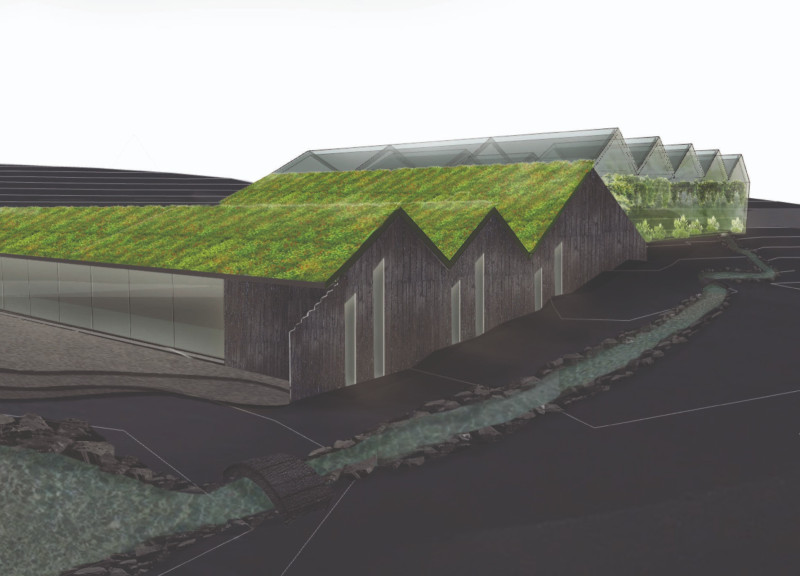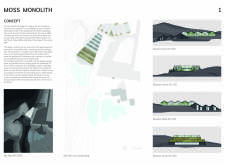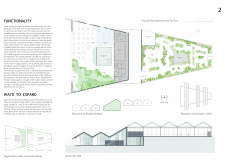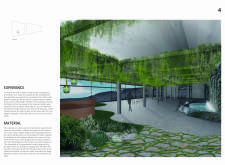5 key facts about this project
An essential component of the design is the building’s conical shape, which enhances natural light penetration essential for the greenhouse functions. The structure's configuration supports the cultivation of diverse plant life, which is integral to the farm-to-table dining experience offered by the restaurant. The layout creates a seamless flow between indoor and outdoor spaces, encouraging interaction with the landscape.
Innovative Use of Materials and Energy
The project distinguishes itself through its material choices and energy strategies. Constructed primarily using concrete and glass, the materials were selected for their durability and thermal efficiency. Glass facades provide panoramic views while facilitating natural ventilation, promoting a comfortable interior climate. The incorporation of green roofs not only enhances insulation but also contributes to the urban landscape by allowing vegetation to thrive atop the structure.
Moreover, the project employs a variety of sustainable energy practices. Geothermal energy is sourced from the nearby volcanic activity, providing a renewable power source. A comprehensive water management system, including rainwater collection, supports the greenhouse operations, showcasing a commitment to sustainability and efficient resource use.
Dynamic Architectural Experience
The Moss Monolith project emphasizes multi-functionality, combining a restaurant and greenhouse within a cohesive architectural framework. The open kitchen concept within the restaurant allows patrons to observe food preparation, reinforcing the connection between the dining experience and agricultural practices. This approach not only enhances the culinary experience but also educates visitors about sustainable food sourcing.
Landscaping plays a vital role in the project, with pathways and native plant integration designed to harmonize with the local topography. The outdoor spaces complement the architectural elements, encouraging exploration and interaction with the natural environment.
The Moss Monolith serves as a notable case study in the architectural field, merging innovative design with ecological integrity. It encourages architects and designers to consider both aesthetic and functional aspects of their projects while respecting the interplay between constructed environments and the natural world. To gain further insights into the architectural plans, sections, and overall designs, interested readers are encouraged to explore the project presentation for more detailed analysis and ideas.


























